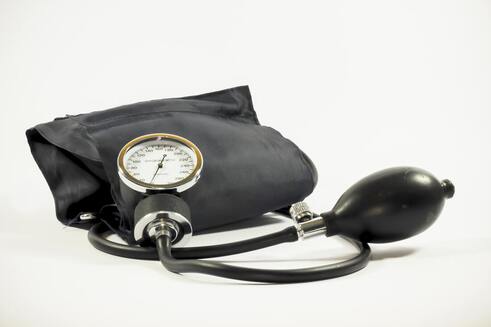|
Often when you go to your doctor you have your blood pressure taken. Your blood pressure is one of those vague things where your doctor gives you a series of numbers and is either happy or concerned. Sometimes your doctor is so concerned he will give you medication for it. I commonly ask patients if they understand blood pressure and why they are on medication for it, however many people do not really understand the concept. So allow me to give you an explanation. Imagine you have a series of pipes in the body along which blood is pumped by the heart. When the heart squeezes the pressure reaches a maximum number (the top number on your blood pressure reading) and when the heart relaxes the pressure drops to a minimum number (the bottom number on your blood pressure reading). This maximum and minimum number change with time and activity, so things like exercise and stress can increase your blood pressure (both maximum and minimum numbers).
The key point is if the pressure is too high for too long, the pipes burst. If this happens in the brain, you have a stroke, if in the kidneys, you can have kidney damage or if in the eyes can it lead to eye problems. By monitoring your blood pressure we can prevent a problem from happening by reducing your blood pressure before it gets into the danger zone. The problem for us as doctors is that it is stressful when you as a patient come to see us and so your blood pressure is artificially high. As a result we do not make any decisions on blood pressure unless it is taken on 3 separate occasions and abnormal. From the patients point of view you have to keep on coming back to see us time and again. I often tell my patients to purchase a blood pressure machine - this is not new technology but is certainly useful. Measure your blood pressure when you are at home and relaxed over a period of time and bring those readings in to show me. This is often a truer reflection of your current blood pressure and makes an efficient assessment possible by your doctor. Current products on the market offer a sleek appearance, portability and connection to your phone. As long as it is clinical grade and calibrated, it is good enough for me, (decisions on design etc, I will leave to you!) These products if used on a regular basis can identify issues before they become a problem. The real game changer however will be the device that is small, wearable, accurate and most importantly continuous. If we can track you blood pressure on a continuous basis then we will truly have an accurate insight into your health. We are not there yet but when this happens, I do believe those who embrace this type of monitoring will be able to offset a really common cause of ill health. Blog post written by Dr Khurram Akhter. Khurram is an experienced primary care physician and a thought leader in the field of digital health. Disclaimer: This text does not serve as medical advice and if you have any questions, seek advice from your doctor.
2 Comments
John Acott
14/9/2020 06:12:13 pm
I have a blood pressure machine and take a reading most days. I find there’s a vast difference in readings when I take it sitting up and then lying down. The lying down reading is always much lower. What is the recommendation position?
Reply
Editor
14/9/2020 08:49:29 pm
Hi John, thank you for your comment. There are many things to consider from what you have written and the question you have asked is best directed at your GP.
Reply
Your comment will be posted after it is approved.
Leave a Reply. |
AuthorContributors Archives
March 2020
Categories
All
|
|
SOCIAL
|
HealthAide is an independent resource. We do not own shares or make profits from the products listed on this site. Products and services have been curated using the Four Principles of Healthcare Ethics (Beauchamp, T. and Childress, J. (1985) Principles of Biomedical Ethics)
© COPYRIGHT 2018. ALL RIGHTS RESERVED.



 RSS Feed
RSS Feed